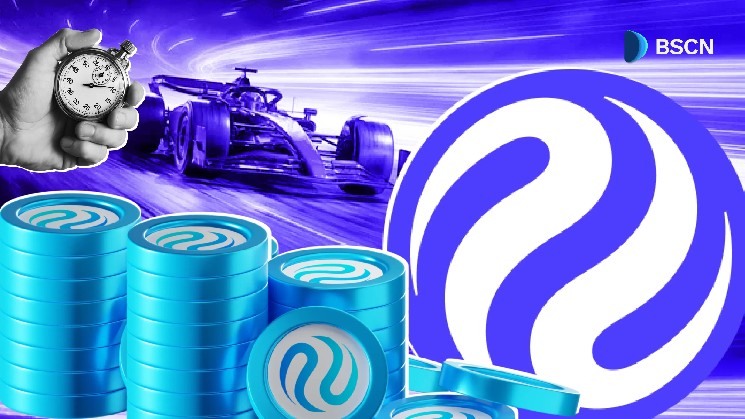Injective Protocol recently launched its highly anticipated Lyora mainnet upgrade, marking a significant step forward for one of crypto’s most promising layer-1 blockchains.
Designed for next-generation DeFi applications, Injective is already known for its speed and interoperability. Now, Lyora takes that foundation and builds on it with better performance, stronger infrastructure, and more intelligent transaction handling.
Image: Injective
A Boost in Performance and Network Efficiency
At the core of the Lyora upgrade are fundamental changes to how the Injective blockchain processes transactions. The upgrade introduces a more powerful core engine that lowers latency and increases throughput.
In simple terms, this means faster transactions and higher network capacity—both of which are crucial for developers and users relying on seamless DeFi experiences.
More than just speed, the upgrade improves network predictability and user experience. Due to a redesigned smart mempool system, high-priority transactions are now processed more reliably even during peak periods.
According to the Injective team, this means users will see fewer delays and better responsiveness, especially in high-frequency trading or complex DeFi operations.
Dynamic Fees: Fairer, Smarter, and More Scalable
One of Lyora’s most talked-about features is its dynamic fee model. Instead of having fixed gas fees, Injective now adjusts them automatically based on real-time network demand.
- During low activity, fees drop—making it cost-effective for all users.
- During high activity, fees adjust to prioritize important transactions, helping critical dApps and DeFi agents maintain performance.
This approach offers flexibility without sacrificing efficiency. It also makes the network more accessible to everyday users, while still accommodating high-volume traders and complex protocols. It’s a meaningful change for dApp developers who need reliable execution without worrying about price spikes.
Stronger Foundations for Future Growth
Lyora also lays technical groundwork for what’s next. Injective has enhanced multiple core modules under the hood to improve security, stability, and scalability. These changes include faster data validation, improved consensus mechanisms, and more efficient block processing—all of which position Injective for future integrations and use cases.
With a stronger and more secure base, the blockchain is now better equipped to host advanced financial products, multi-chain applications, and new forms of DeFi innovation.
Why It Matters for INJ Token Holders
The Lyora upgrade also has direct implications for INJ token holders.
As the Injective blockchain becomes faster and more developer-friendly, the ecosystem is likely to attract more projects. That can mean higher usage, more staking, and stronger demand for INJ tokens.
The upgrade may also reinforce Injective’s appeal to institutional developers and market makers, potentially bringing new liquidity and use cases.
In addition, the more INJ is used for transaction fees, staking, and governance, the stronger its role becomes in Injective’s economic model.
Injective already has a deflationary system where 60% of exchange fees are burned. As usage rises, so does the burn rate, contributing to scarcity and potential value growth over time.
A Future-Focused DeFi Platform
Injective has always positioned itself as more than just another blockchain. It’s a platform built for real-world financial applications—derivatives, decentralized exchanges, lending, and more. Lyora strengthens that mission.
By providing a faster, more efficient, and developer-friendly infrastructure, this upgrade helps Injective meet the rising demands of global DeFi.
And according to Injective, “this is just the beginning.”

